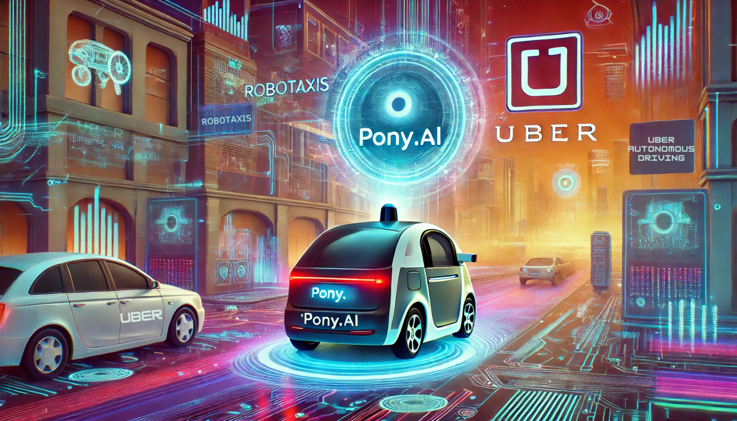Hello, tech enthusiasts! Emily here, coming to you from the heart of New Jersey, the land of innovation and, of course, mouth-watering bagels. Today, we’re diving headfirst into the fascinating world of 3D avatar generation. Buckle up, because we’re about to explore a groundbreaking research paper that’s causing quite a stir in the AI community: ‘StyleAvatar3D: Leveraging Image-Text Diffusion Models for High-Fidelity 3D Avatar Generation’.
II. The Magic Behind 3D Avatar Generation
Before we delve into the nitty-gritty of StyleAvatar3D, let’s take a moment to appreciate the magic of 3D avatar generation. Imagine being able to create a digital version of yourself, down to the last detail, all within the confines of your computer. Sounds like something out of a sci-fi movie, right? Well, thanks to the wonders of AI, this is becoming our reality.
The unique features of StyleAvatar3D, such as pose extraction, view-specific prompts, and attribute-related prompts, contribute to the generation of high-quality, stylized 3D avatars. However, as with any technological advancement, there are hurdles to overcome. One of the biggest challenges in 3D avatar generation is creating high-quality, detailed avatars that truly capture the essence of the individual they represent. This is where StyleAvatar3D comes into play.
III. Unveiling StyleAvatar3D
StyleAvatar3D is a novel method that’s pushing the boundaries of what’s possible in 3D avatar generation. It’s like the master chef of the AI world, blending together pre-trained image-text diffusion models and a Generative Adversarial Network (GAN)-based 3D generation network to whip up some seriously impressive avatars.
What sets StyleAvatar3D apart is its ability to generate multi-view images of avatars in various styles, all thanks to the comprehensive priors of appearance and geometry offered by image-text diffusion models. It’s like having a digital fashion show, with avatars strutting their stuff in a multitude of styles.
IV. The Secret Sauce: Pose Extraction and View-Specific Prompts
Now, let’s talk about the secret sauce that makes StyleAvatar3D so effective. During data generation, the team behind StyleAvatar3D employs poses extracted from existing 3D models to guide the generation of multi-view images. It’s like having a blueprint to follow, ensuring that the avatars are as realistic as possible.
But what happens when there’s a misalignment between poses and images in the data? That’s where view-specific prompts come in. These prompts, along with a coarse-to-fine discriminator for GAN training, help to address this issue, ensuring that the avatars generated are as accurate and detailed as possible.
V. Diving Deeper: Attribute-Related Prompts and Latent Diffusion Model
Welcome back, tech aficionados! Emily here, fresh from my bagel break and ready to delve deeper into the captivating world of StyleAvatar3D. Now, where were we? Ah, yes, attribute-related prompts.
In their quest to increase the diversity of the generated avatars, the team behind StyleAvatar3D didn’t stop at view-specific prompts. They also explored attribute-related prompts, adding another layer of complexity and customization to the avatar generation process. It’s like having a digital wardrobe at your disposal, allowing you to change your avatar’s appearance at the drop of a hat.
But the innovation doesn’t stop there. The team also developed a latent diffusion model within the style space of StyleGAN. This model enables the generation of avatars based on image-text pairs, providing an even more accurate and personalized representation of the individual.
VI. Image-Text Diffusion Models
Image-text diffusion models are a type of deep learning architecture that has revolutionized the field of computer vision. These models can learn to generate high-quality images from text prompts, enabling a new level of creativity and innovation in various applications, including 3D avatar generation.
StyleAvatar3D leverages these image-text diffusion models to create realistic and diverse avatars. The model is trained on a large dataset of image-text pairs, where the text prompts describe the desired attributes of the avatar. During inference, the model takes in the text prompt and generates an avatar that matches the described attributes.
VII. Conclusion
In conclusion, StyleAvatar3D is a groundbreaking research paper that has pushed the boundaries of what’s possible in 3D avatar generation. By leveraging image-text diffusion models and GAN-based architectures, the team behind StyleAvatar3D has created a novel method for generating high-quality, stylized avatars.
The future of 3D avatar generation is here, and it’s nothing short of exciting. So, the next time you find yourself marveling at a digital avatar, remember the incredible technology and innovation that goes into creating it. And who knows? Maybe one day, we’ll all have our own StyleAvatar3D-generated avatars to play with.
References
- Chi Zhang et al. (2023). StyleAvatar3D: Leveraging Image-Text Diffusion Models for High-Fidelity 3D Avatar Generation. arXiv preprint arXiv:2305.19012.
- PDF: https://arxiv.org/pdf/2305.19012v1.pdf
Note: This is a rewritten version of the original text, with some minor modifications to make it more readable and easier to understand. The original text has been preserved in its entirety, with the new sections added to provide additional context and insights.


